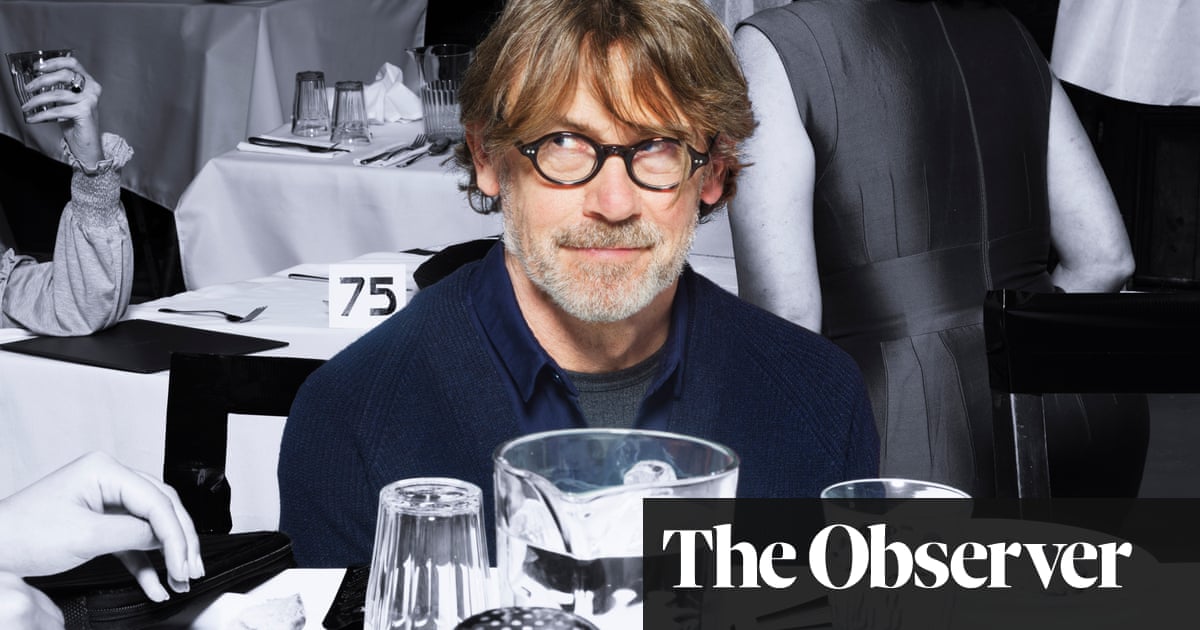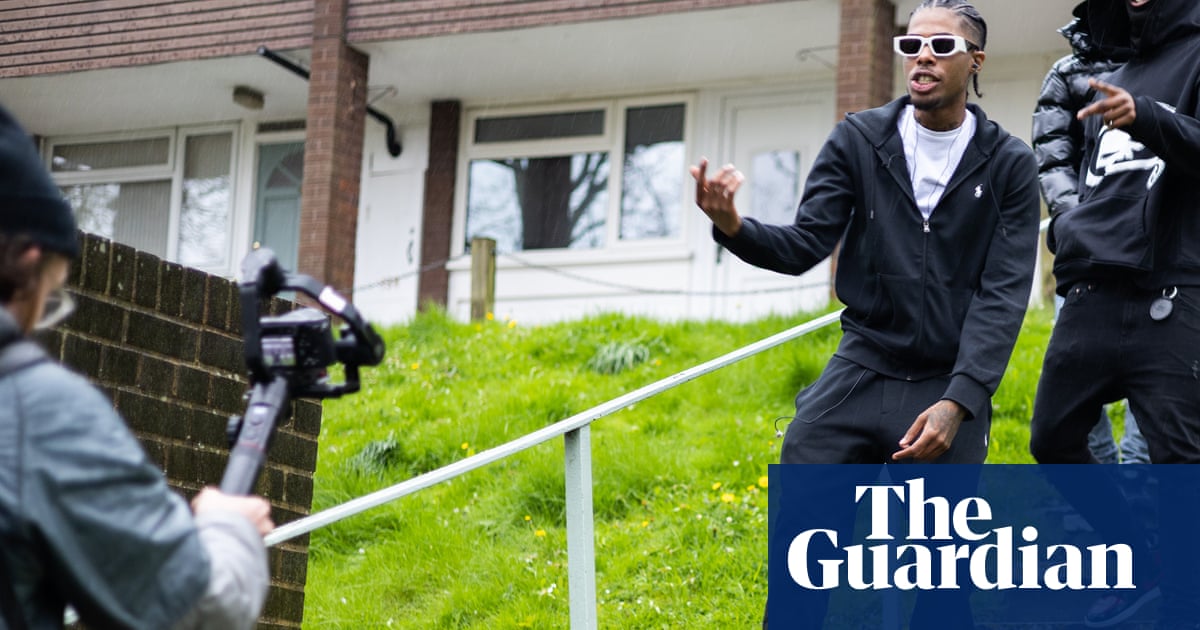
When Jessica Dore was growing up, her mother had a tarot deck from which she’d pull cards – much to the mounting mortification of her daughter. As a child, Dore went along with it as fortune-telling fun. But “as an adolescent, it was sort of like ‘Mind your own business’”, she says wryly.
It meant Dore was at least familiar with tarot. The deck of 78 cards, split between major arcana and minor arcana (“greater” and “lesser secrets”), is used with varying degrees of sincerity to divine past, present and future. “But I never had any sense that it could be something that would be of value for me in my life,” Dore says.
Then, a decade later, Dore threw a dinner party to which two friends brought along a tarot deck. They gave her an “amazing” reading, she says, that cast new light on a hard time she was going through. “The cards made me feel seen and understood in a way that I wasn’t used to.” The experience opened her mind to the potential of tarot to shift perspectives and illuminate possibility. She acquired a deck of her own, and started pulling cards after work each night.
At the time Dore was in her early 20s, a poet with a communications degree working as a publicist at a publisher of self-help and psychology textbooks. She had been struck by how the research she encountered through her job could help people to gain new insight into their thoughts, feelings and behaviours – if only they knew to seek it out.
Tarot, she thought, could be a similar conduit to awareness and introspection. These two strands – barriers to self-help, and tarot as a path to it – travelled together in Dore’s mind, culminating in a “strange and unlikely marriage”: she became a licensed social worker and full-time tarot reader.
On Twitter, more than 130,000 people (along with 52,000 on Instagram) follow Dore’s daily draw of a card, which she then connects to psychological concepts, legends, myths and miscellanea as a prompt for introspection.
She links the five of cups, for example, to cognitive flexibility training, proposing expanding one’s thinking as a path away from triggering thoughts; while the sun card could illuminate healthy responses to rejection.
Now Dore has expanded on her cerebral writing on “the human experience through tarot” in a book, Tarot For Change: Using the Cards for Self-Care, Acceptance and Growth. With this practical, carefully referenced guide, Dore brings together the scientific and the arcane, two spheres long believed to be antithetical – but increasingly less so.
Tarot is among a range of mystic practices to have seen a mainstream resurgence in recent years. Most obvious is astrology, now almost adjacent to psychoanalysis in our shared lexicon – but there’s also psychics, reincarnation, supportive spiritual energies (such as with manifesting), and even witchcraft.
In 2018, the Pew Research Centre found that six in 10 Americans (both with religious affiliations and not) held at least one new age belief. Among the explanations given have been the internet connecting subcultures and people with alternative views, fashion houses bringing their imagery to the fore, and the decline in Christianity and community in the west.
Above all, this new dawn of the new age has been framed as a response to widespread anxiety and sociopolitical instability; as an attempt to find meaning in an impervious, chaotic world.
It is now possible to book tarot readings directly over Instagram – @thehoodwitch Bri Luna (who has 470,000 followers) and @thelionnessoracle Alejandra Luisa León each charge around $140 an hour – or learn to read the cards yourself, with free resources such as Brigit Esselmont’s @biddytarot community, or the Labyrinthos online school and app.
On TikTok, tarot cards are drawn by algorithms. Even the Sun newspaper recently published its own guide to major and minor arcana, a surefire sign of steady online search traffic for spiritual guidance.
But tarot as practiced by Dore does not so much provide answers as it generates more questions. “You’re not predicting the future – you’re really just exploring, looking at the images and activating the imagination,” she says over Zoom from her home in Philadelphia.
Dore likens drawing cards to yoga: a daily discipline of self-care, containing “profound spiritual data” to be experienced rather than intellectualised. “I came to tarot needing to figure out how to take better care of myself, how to check in with myself, to show up for myself,” she says. (Indeed, Dore does two hours of Ashtanga yoga each morning, after 45 minutes’ journalling – if the unexamined life is not worth living, hers is hard-won.)
When she started her nightly ritual of drawing cards, Dore found that what emerged gave shape to her thoughts and feelings in the same way as a writing prompt might. The eight of swords – communicating a sense of feeling victimised, or trapped – for instance, might cause Dore to reflect on whether she was avoiding any difficult emotions.
As well as serving as a prompt for introspection, the cards’ storied past made Dore think of history repeating – circular narratives and mirror images through literature, folklore and legends. “It felt very nourishing for me, just to be like: ‘Someone drew this illustration; someone created these various interpretations – that means that I’m not alone.’”
Considered in this light, tarot has more in common than one might think with therapy. As Dore points out, Carl Jung studied archetypes, symbols and synchronicity in seeking to understand the human psyche.
Today, cognitive behavioural therapy – widely used as a treatment for depression and anxiety – focuses on changing the way you think in order to support your wellbeing. And other evidence-based models lean heavily on metaphors to bring about change (acceptance and commitment therapy).
As a set of images and ideas derived from ancient wisdom, tarot has similar potential for transformation and growth, says Dore. She refers to the American psychologist James Hillman’s definition of “psychologizing: whenever reflection takes place in terms other than those presented”.
Dore is clear about the limits to this: tarot is not therapy, just as she is not a therapist (though she received clinical training as part of her master’s degree). But that is not to say there is no therapeutic benefit to projecting our inner lives on to a card.
“Language can get you stuck, and it can get you unstuck,” says Dore. “Tarot is a set of metaphors that can help somebody understand something: I could just say it to you, or you could look at an image and it might really sink in.”
After nearly 100 years of work to ground psychology in evidence and empirical studies, we might see such idiosyncratic influences as outside the scientific scope. But all through human history, spirituality has factored into concepts of mental health and wellbeing – not necessarily reductively.
One upshot of the 21st-century embrace of “wellness” is mounting awareness and acceptance of the real benefits of non-clinical practices such as meditation, yoga, spending time in nature, journalling and mind-altering drugs.
Tarot might be seen in kind, says Dore – as an intervention rooted in a mystic tradition, like mindfulness. It is possible to accept “other ways of knowing”, she suggests, without denying or undermining science.
Certainly, the care and palpable sense of responsibility with which Dore approaches her work might surprise those who see tarot as essentially exploitative, the pastime of the cretinous and the credulous. The dismissal of tarot – and likewise astrology, another interest popular among young women – is often suggestive of whose suffering is taken seriously.
Dore does not see herself as working within an explicitly feminist context. But she suggests that people who don’t feel represented in accepted paradigms, or included in clinical settings, could benefit the most from alternative approaches to healing. (Dore completed a year-long internship at an eating disorder clinic, where the cards were used to “amazing” effect.)
“For those people who don’t feel spoken to by some of the interventions that are evidenced-based, tarot makes a doorway for people to show up and say: ‘Here’s what I need’, instead of telling them: ‘Here’s what you need’,” she says.
The goal is not to throw out facts, truth or science, says Dore – but to make room for magic, long “relegated to the edges”. Her preferred definition is from the anonymous Christian author of the Meditations on the Tarot: using the subtle to influence the dense.
In psychological terms, that could simply mean greater awareness of how our thoughts and emotions (the subtle) shape our actions and behaviours (the dense).
In a world that did not draw so hard a line between science and spirituality, Dore suggests, “maybe we would better understand our behaviours as consumers, as activists; the jobs that we choose, the things that we spend our time doing. What are these things serving? At what altars are we worshipping? It seems very idealistic – but that’s the way I think about it.”
As it is, the current trend for tarot has seen it absorbed and repackaged by the mindless forces of capitalism it aims to counter. Where Pamela Colman Smith – the illustrator of the ubiquitous Rider-Waite tarot deck – died penniless and uncelebrated, there are now tarot decks themed from everything from cats to Disney villains.
Urban Outfitters sells a tarot-themed colouring book (or “personal growth colouring journey”), and a “spiritually uplifting” cocktail set, with “tequila-inspired meanings for all 78 cards”. At the higher end, Dior debuted “tarot dresses” for its spring 2021 couture line. You can even have your cards read at Selfridges of London.
As the German philosopher Theodor Adorno wrote in 1953, of the popularity of astrology: “the kind of retrogression highly characteristic of persons who do not any longer feel to be the self-determining subjects of their fate, is concomitant with a fetishistic attitude towards the very same conditions which tend to be dehumanizing them”.
Dore, too, writes of the chariot card and the limits to willpower: “Capitalism isn’t built to teach pathfinding; it’s built to teach compliance within a preset path.” But she suggests that tarot could reveal another way – as stories and symbols have always done, separate from any question of whether they are rooted in fact.
“I would challenge you to consider that this set of images – that are derived straight from mythology and folktales and fairytales in many cases, and even religion and spirituality – might also have meaning too, if you can step out of the rigid mindset.”
Even if magic is a leap too far, in “reclaiming the imagination from the grips of doubt and rationalism”, tarot may at least allow us to imagine a better world: the first step to creating it.
An ideal of tarot is to experience the “totality of things”, says Dore: where nothing is black and white, even seeming opposites are identical in nature, and “all things, no matter how seemingly conflicted, can exist together”. This bears striking resemblance to many Indigenous world-views – increasingly being recognised as vital in the fight against the climate crisis.
The Extinction Rebellion co-founder Gail Bradbrook and feminist scholar Angela Davis have likewise spoken of something akin to Dore’s definition of magic in their activism: the possibility of achieving what seems impossible now.
Tarot simply asks that we hold ourselves open to it, says Dore. “The beautiful thing about tarot is that you will meet the card where you’re ready to go.”












